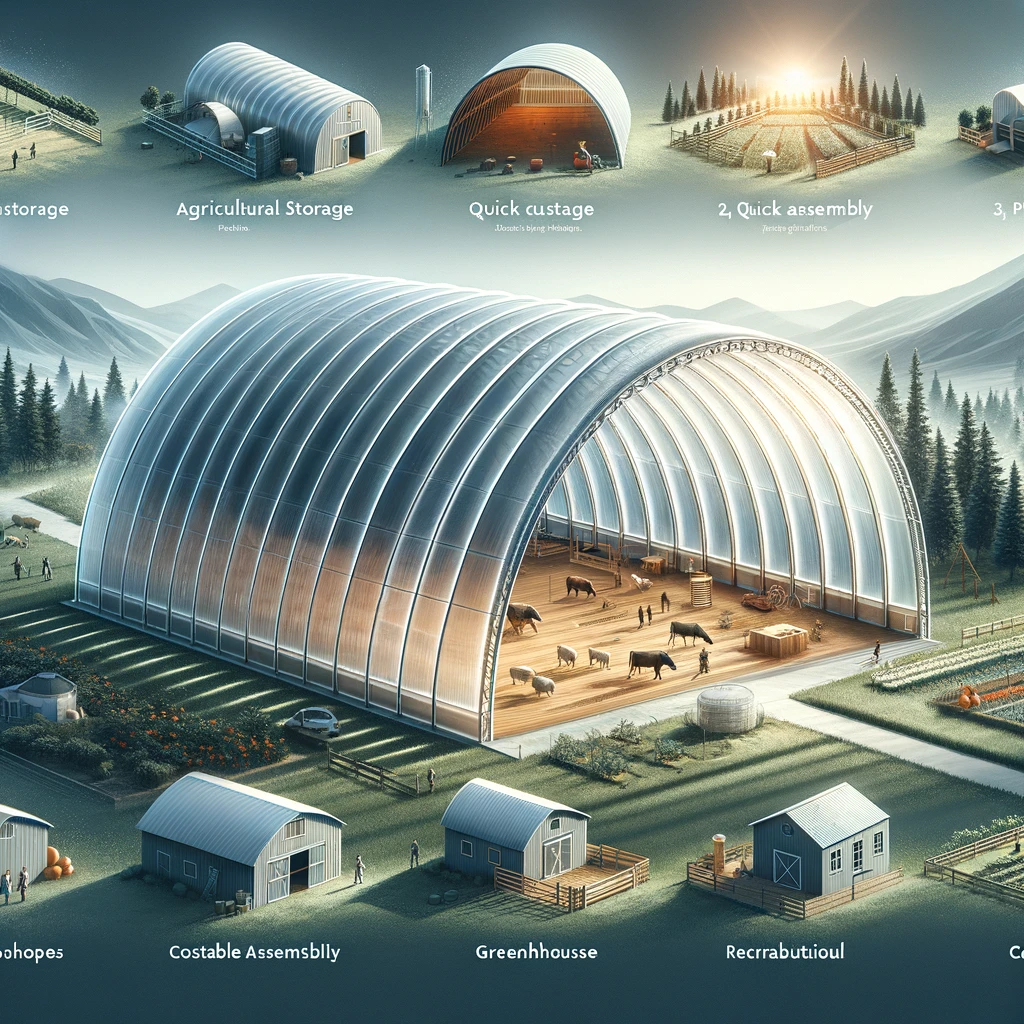Introduction
Hoop buildings, also known as hoop barns or hoop houses, are versatile structures that serve a wide range of uses across commercial, agricultural, and recreational sectors. Characterized by their arched, hoop-like shape, these buildings are constructed using a series of large hoops covered with durable fabric or metal sheeting. This guide provides essential information on hoop buildings, including their benefits, common uses, and factors to consider when purchasing or constructing one.
Benefits of Hoop Buildings
1. Cost-Effective: Compared to traditional buildings, hoop buildings are more affordable to construct and maintain, making them an attractive option for budget-conscious businesses and individuals.
2. Quick Assembly: The design of hoop buildings allows for rapid assembly and disassembly, which is ideal for temporary or seasonal applications.
3. Versatility: They can be used for a variety of purposes, including storage, workshops, livestock housing, and greenhouses, offering flexibility to meet changing needs.
4. Durability: Made with high-quality materials, hoop buildings can withstand harsh weather conditions, providing reliable protection for equipment, crops, and animals.
5. Natural Lighting: The translucent fabric covers allow natural light to penetrate, reducing the need for artificial lighting and promoting plant growth in hoop house greenhouses.
Common Uses of Hoop Buildings
- Agricultural Storage: Storing machinery, equipment, hay, grain, and other agricultural products.
- Livestock Housing: Providing shelter for cattle, poultry, swine, and other animals.
- Greenhouses: Creating controlled environments for growing fruits, vegetables, flowers, and other plants.
- Workshops and Industrial Storage: Housing workshops, manufacturing processes, and storing industrial materials.
- Recreational Facilities: Serving as indoor sports facilities, event spaces, and recreational areas.

Factors to Consider When Choosing a Hoop Building
1. Material Quality: Ensure the frame and cover materials are of high quality to withstand environmental stress and wear.
2. Size and Design: Consider the intended use to determine the appropriate size and design, including height, width, and length, as well as door and ventilation options.
3. Foundation Requirements: Depending on the location and use, you may need a concrete foundation or other types of flooring.
4. Local Regulations: Check local building codes and zoning regulations to ensure compliance, especially for permanent installations.
5. Manufacturer and Supplier: Choose reputable manufacturers and suppliers with positive reviews and warranties to ensure you receive a quality product and support.
Purchasing and Installation
- Research and Compare: Look at different models and suppliers to find the best fit for your needs and budget.
- Installation Services: Some suppliers offer installation services, which can be a convenient option to ensure proper setup.
- DIY Options: For those with the necessary skills, self-installation can be a cost-saving measure.
Conclusion
Hoop buildings offer a practical and economical solution for a wide range of commercial and agricultural needs. Their durability, flexibility, and ease of assembly make them an appealing choice for many applications. By carefully considering your needs and the factors mentioned above, you can select or build a hoop building that effectively meets your requirements.

Leave a Reply